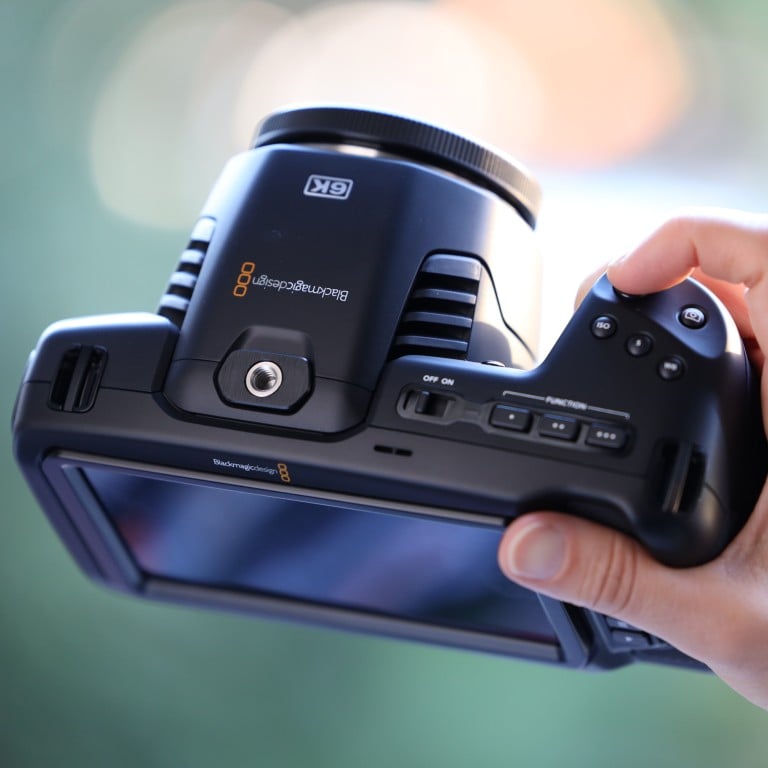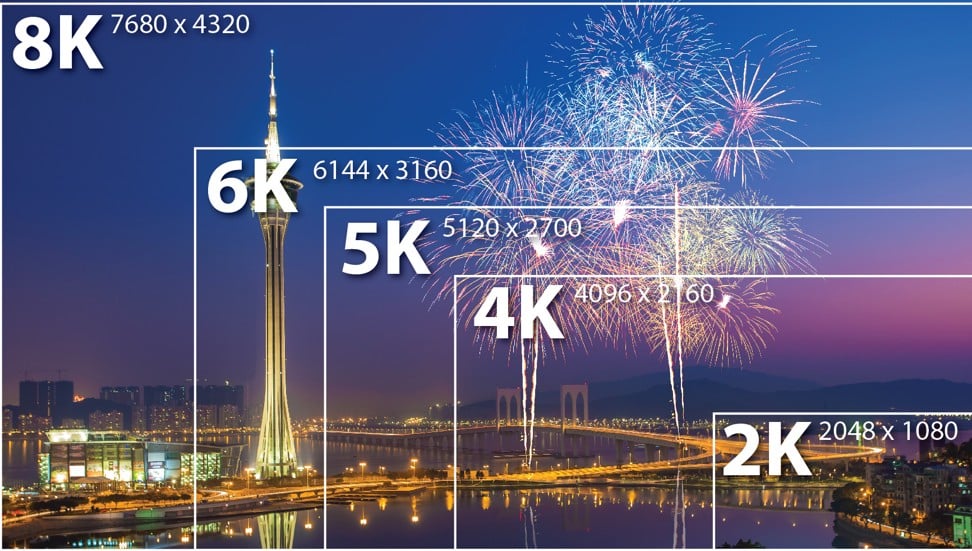Review / We review the Blackmagic Pocket Cinema Camera 6K: cinema-quality resolution on a handheld, entry-level priced camera

About a year after Blackmagic Design took the filmmaking world by storm with the Pocket Cinema Camera 4K at an affordable US$1,295, they released the 6K version with an EF lens mount, compatible with Canon lenses, for US$2,495.
Here STYLE tech writer Derek Ting – the celebrated Hong Kong filmmaker behind Always (2015) and Agent (2017) – shares his professional opinion.
Overall rating: 8.8
The Blackmagic Pocket Cinema Camera 6K opens up creative possibilities while delivering video quality to rival high-end film cameras, which can cost 10 to 100 times the price.
Turn-ons:
- 6K raw video is an uncompressed recording format allowing a 50 per cent increase – when working in 4k – in your ability to reframe in the editing stage, while retaining detail and colour.
- An EF mount opens up the lens options, especially for Canon and Sigma users.
- Five-inch touch screen for monitoring with simple menus.
- Great lowlight performance (meaning less digital “noise”) with dual native ISO at 400 and 3200.
- Full-size HDMI port for video monitoring.
- USB-C port, offering the ability to record to an SSD/NVMe drive.
- Mini XLR jack for high-quality sound input.
- A free copy of industry standard editing and colouring software DaVinci Resolve (worth US$300).
How to take SLR-quality photos with your iPhone
Turn-offs:
- There’s increased slow motion recording to 120 frames-per-second (fps) at 2.8K – but we wish they could have made it 4K.
- Still no continuous autofocus, found on most Sony and Canon models.
- The battery lasts a maximum of just one hour, though there is an adaptor option.
What’s known as 4K resolution comes in two formats – 3,840 x 2,160 pixels or 4,096 x 2,160 pixels – where each pixel represents a collection of coloured dots on a monitor or screen. It’s these dots that make up a picture, so the more dots we can see, the clearer the image. The Blackmagic Pocket Cinema Camera 6K delivers 6,144 x 3,456 pixels. So that means it’s 1.5 times the amount of dots.
These days you can find 4K resolution on your phone, but the number of professional 6K cameras, let alone the ability to record raw, uncompressed video, are rare and expensive (starting at US$10,000). Filmmakers will tell you that having higher resolution allows them to “reframe” an image either for a different look, or to “punch in” (enlarge the picture). With 6K, you won’t lose as much detail when doing so – especially if you are creating a 4K movie. And if you are creating an HD movie (1,920 x 1,080 pixels), which would be appropriate for smartphones and tablets, imagine how much creative freedom you have – 6K might save your project.

What is this EF thing you are talking about?
Different lenses allow a filmmaker to capture shallow depth of field (with the subject in focus and the background blurry with what’s called bokeh), wide shots, close-ups and a variety of shots that give you the cinematic feel.
The 4K version is a Micro Four Thirds (M4/3) mount which requires an expensive adaptor (US$600-US$700, though cheaper options are available) to use popular Canon or third-party lenses, such as Sigma. If you own a lot of M4/3’s lenses then you wouldn’t want the 6K version because you wouldn’t be able to connect and use them. With an EF mount, your options for lenses – both new, used, and for renting – open up tremendously without the need for an adaptor.
We review the Canon EOS RF 35mm F/1.8 IS Macro STM lens
For 6K, do I need a new computer and editing software?
Blackmagic Design has created their own format called Blackmagic RAW to record 6K, and other resolutions, optimised to capture as much colour information as you need. You can use it with their own editing suite, called DaVinci Resolve, which comes with the camera (and is normally sold separately for US$300).
I used my Macbook Pro (15-inch, 2016) with 16GB of RAM and a 4GB video card, and it was able to handle the footage well for my YouTube channel. I’m a big proponent of DaVinci Resolve as it is the industry standard for professional colour and handles 4K resolution and above files better than other editing software on slower computers. However, bear in mind the support and number of users compared to Adobe, Avid and Final Cut Pro is much smaller. Bump up performance with an external graphic processor, such as an eGPU, which turns your laptop into a beast.
Sony’s a6400 camera: Could this be your best travel companion?
How’s the video quality?
The image sensor is slightly larger than the original 4K, so naturally it’s better. But have a look at the above YouTube video, where I tested different Blackmagic RAW compression versions, from 3:1 compression to 12:1. I felt 8:1 was a nice blend of file storage versus quality, but certainly record whatever level you deem fit.
I found 3:1 compression needs fast media cards or hard drives to keep up without dropping frames, so bear that in mind. All in all, the image is really great and I’m excited about the creative possibilities of 6K, so much so that I’m going to use the camera for an additional action sequence in my upcoming movie Agent II Revelation.

What about everything else?
The bumped up slow motion to 2.8K at 120fps is great, but I wish it was at 4K. Continuous autofocus would be a huge bonus, but I think you are going to be using this camera with manual precision in your short film, commercial or feature situations.
Blackmagic’s 4K camera conjures top-quality features at budget price
What about the style?
Since the look hasn’t changed and it’s added a huge snout (for the EF mount), leave some budget for all those filmmaking accessories like a cage to stroke your ego during your behind the scenes footage – but in the end, what will matter most is what ends up on screen, and that 6K quality will make your friends jaws drop.
Should it be on my wish list?
Yes for sure. I’d choose the 6K version over the 4K unless you own M4/3’s lenses already. For the entry-level filmmaker, you’ll be entering a professional ecosystem that is emerging to be a leader in hardware and software at a great price, and for the veterans, this is going to blend nicely (colour-wise) with your more expensive gear – but you might even leave everything else at home to stay nimble, knowing you are going to get a great image with this handheld option alone. With raw 6K footage for all filmmakers at this price, the creative possibilities are much clearer.
Want more stories like this? Sign up here. Follow STYLE on Facebook, Instagram, YouTube and Twitter .

Blackmagic Design’s new Pocket Cinema Camera ramps up the resolution to 6K and introduces an EF mount, allowing you to use Canon and Sigma lenses – all for under US$2,500 – but Micro Four Thirds users may want to stick to the cheaper 4K version